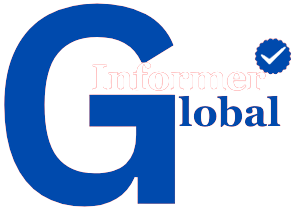In today’s hyper-connected world, it’s easy to feel overwhelmed by the constant barrage of notifications, emails, and social media updates. This digital noise can erode our focus, hinder productivity, and even impact our mental well-being. Digital minimalism offers a compelling solution by advocating for a more intentional and streamlined use of technology. In this blog, we’ll explore the concept of digital minimalism, share strategies for reducing digital clutter, and provide practical tips for adopting a minimalist approach to technology.
Understanding Digital Minimalism
Digital minimalism is a philosophy that encourages users to be more intentional with their technology use. It involves curating your digital environment to focus on tools and practices that genuinely add value to your life, while eliminating or minimizing those that don’t. The goal is to enhance productivity, improve focus, and foster a healthier relationship with technology.
Key principles of digital minimalism include:
- Intentional Use: Deliberately choosing how, when, and why you engage with technology.
- Value-Driven Tools: Using digital tools that align with your personal and professional goals.
- Clutter Reduction: Removing unnecessary apps, devices, and notifications that distract from meaningful activities.
Strategies for Reducing Digital Clutter
- Conduct a Digital Declutter
Start with a comprehensive digital declutter. This involves taking a break from optional technologies for a set period (e.g., 30 days) to assess their impact on your life. After this hiatus, reintroduce only those technologies that add significant value.
Steps:
- Identify all digital tools and platforms you use.
- Categorize them into essential and non-essential.
- Take a break from non-essential tools for 30 days.
- After the break, evaluate their impact and decide which to reintroduce.
- Set Clear Intentions for Technology Use
Define clear purposes for each digital tool you use. For instance, use social media to connect with friends and professional networks, not for mindless scrolling.
Steps:
- List the primary reasons you use each app or tool.
- Set specific goals (e.g., check email twice a day, limit social media to 30 minutes).
- Create a Focus-Friendly Digital Environment
Design your digital workspace to minimize distractions and enhance focus.
Steps:
- Use apps like Focus@Will or Noisli to create a conducive working environment.
- Employ website blockers like Freedom or StayFocusd during work hours.
- Keep your desktop and smartphone home screen clutter-free.
- Batch Processing and Time Blocking
Batch similar tasks together and allocate specific time blocks for focused work.
Steps:
- Schedule email and message checks at specific times instead of constantly monitoring.
- Dedicate blocks of time for deep work, free from digital interruptions.
Practical Tips for Adopting Digital Minimalism
- Streamline Notifications
Reduce the number of notifications you receive to minimize distractions.
Steps:
- Turn off non-essential notifications.
- Set “Do Not Disturb” modes during work and personal time.
- Limit Social Media Usage
Set boundaries for social media to prevent it from becoming a time sink.
Steps:
- Use apps like Moment or Screen Time to monitor and limit usage.
- Designate specific times for checking social media.
- Practice Mindful Consumption
Be intentional about the digital content you consume.
Steps:
- Subscribe only to newsletters, podcasts, and channels that add value.
- Regularly clean up your subscriptions and unfollow accounts that no longer serve your interests.
- Implement a Digital Sabbath
Take regular breaks from technology to recharge and reconnect with the physical world.

Steps:
- Choose one day a week to disconnect from all non-essential digital devices.
- Use this time for offline activities like reading, hiking, or spending time with loved ones.
Personal Experiences and Case Studies
Case Study: Cal Newport
Cal Newport, the author of “Digital Minimalism,” advocates for a minimalist approach to technology. His experiment with a digital declutter led to significant improvements in focus and productivity. Newport suggests that a more intentional use of technology can help reclaim time and attention for deeper, more meaningful activities.
Personal Story: Emma’s Journey
Emma, a freelance writer, struggled with constant digital distractions. After reading about digital minimalism, she decided to take a 30-day break from social media. During this period, Emma discovered that she had more time for writing and creative pursuits. She reintroduced social media with strict limits and noticed a marked improvement in her productivity and mental clarity.
Conclusion
Digital minimalism is not about rejecting technology but about using it more purposefully. By reducing digital clutter and adopting intentional practices, you can improve your focus, enhance productivity, and foster a healthier relationship with technology. Start small, be consistent, and gradually incorporate these strategies into your daily routine. Embrace digital minimalism to master focus in our increasingly distracted world.















